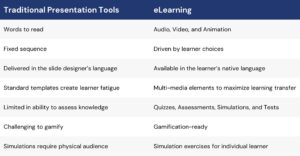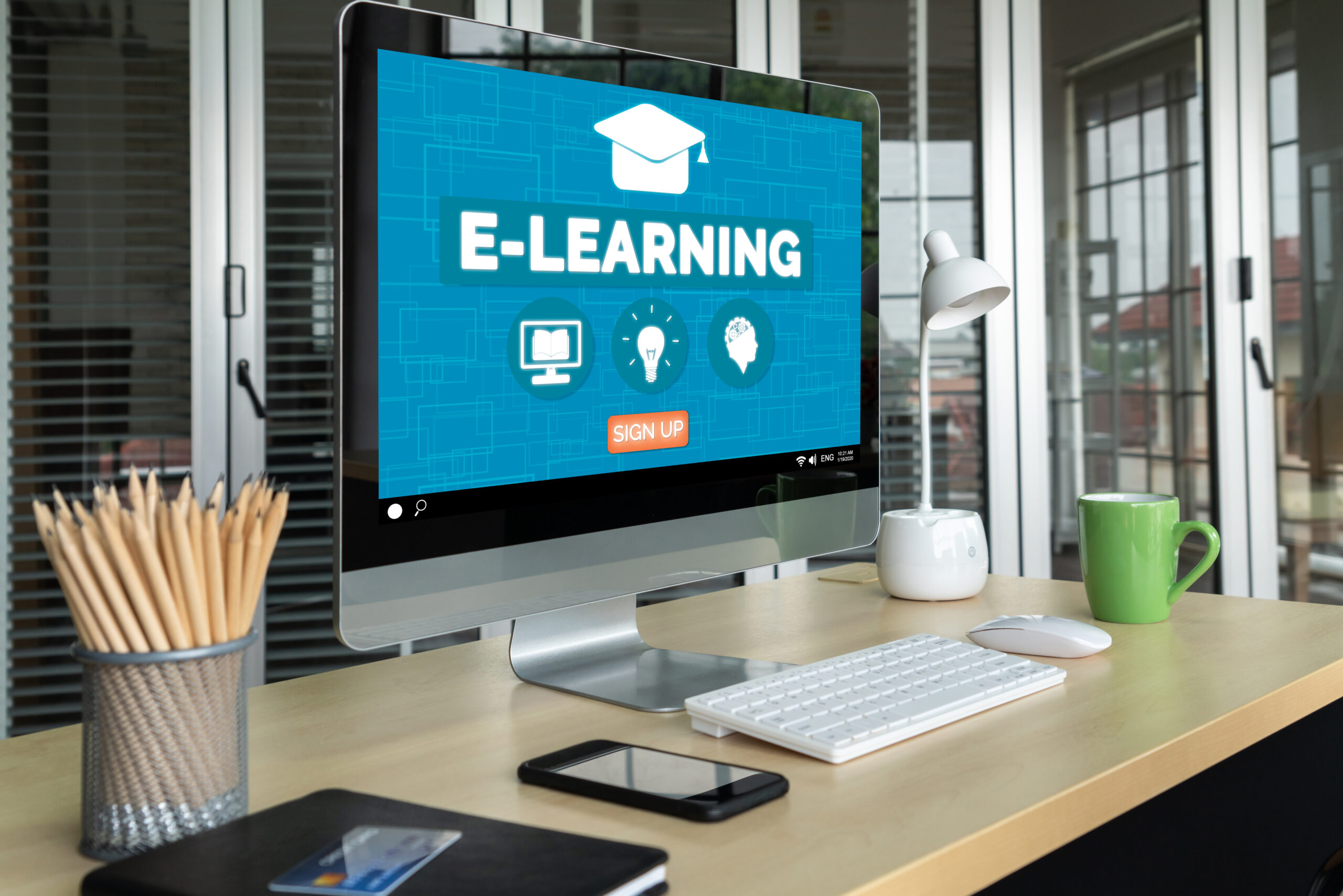Not all eLearning is created equally, but when clients get caught in the trap of cost over quality, too often they choose “Large Library/Low Cost/Low Engagement” instead of “Small Library/High Cost/High Engagement”.
When a company decides to shop the market for eLearning, there are many choices:
- Convert existing Power Point Slides to SCORM-Compliant eLearning: This is a quick way to get an eLearning onto an LMS, but should be done with care to include quizzes and a final test to understand how well learners are retaining information.
- Build a New Course: Each new course build can take 90-180 hours of development and testing time, and sometimes the best way to help learners experience client-specific procedures, equipment, and content.
- Lease from a Library: Rather than convert a presentation or build from scratch, companies have libraries of existing content to meet learner needs.
Unfortunately, there are no formal “standards” in place vendors need to follow when leasing or selling eLearning! Scores of eLearning courses are words on slides with bullet points. As long as it behaves well in a learning management system (LMS), users can take the course, managers see courses are taken, and administrators see test scores. That is seemingly the consensus view on compliance…the bare minimum… but is it enough for your organisation? We certainly hope not! That’s why partnering with your provider in the conversation and creation of quality eLearning is critical for success.
Back in the days
What has created such a broad, sliding scale of quality? Presentation tools. Because a LONG time ago, presentations were the primary way workers learned. Presentation tools are foundational in the development of instructor-led training and eLearning. However, simply converting a presentation into a file that can be read by an LMS doesn’t make it eLearning.
Let’s do a quick side-by-side comparison:

eLearning Key Elements
What sets a true eLearning program apart from a series of slides? There are several elements that separate quality eLearning apart from the masses. Some of the key elements include (but not limited to):
- Bloom’s Taxonomy: Learning objectives following Bloom’s Taxonomy help move learners from knowledge to application of learning
- The 6 D’s of Breakthrough Learning: assures content has a clear link to the company’s business or operational objectives while helping learners transfer what is learned on-the-job
- Practice and Interactivity: within each course, there are specific, practical objectives the learner must achieve.
- Simulations and Situations: ensure the learner is applying newly learned skills to advance through the course. Practicing hazardous tasks before attempting to apply these newly learned skills in the field.
- Real-Time Feedback: is critical for learners to retain knowledge based on and receive immediate feedback and instruction while
It’s proven that individuals learn at their own pace, not the pace of an instructor. eLearning can provide the requisite knowledge a worker needs to be successful before placing their hands on equipment or executing hazardous tasks in the field. Having a sound instructional strategy results in a higher quality eLearning course. If you want to deliver information, presentation tools are the way to go!! If you want your workers to apply what they learn to be safer and more productive in the field, quality eLearning built with a sound instructional design strategy is a safer alternative to a presentation.
Contact us if you need help with your organization’s eLearning offering.


